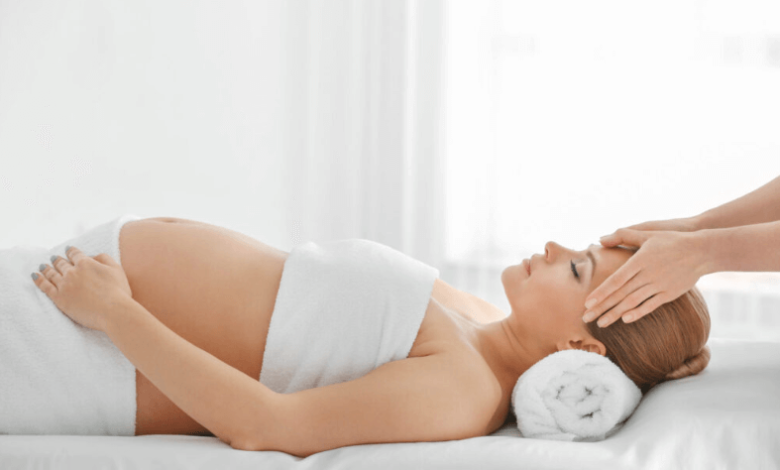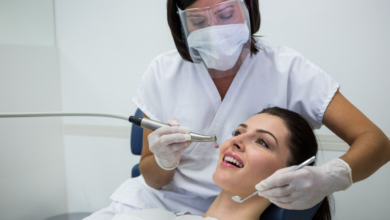How Prenatal Massage Can Help Relieve Pregnancy Discomfort

Pregnancy can be one of the most beautiful experiences in a woman’s life, but it often comes with its share of discomforts. From back pain to swelling and stress, the physical and emotional strains of pregnancy can take a toll. Prenatal massage is becoming an increasingly popular way to address these challenges. This form of massage is specially designed to relieve pregnancy-related discomforts, making the journey to motherhood more comfortable.
Why Prenatal Massage is Essential
Prenatal massage is not only a luxurious treat, but it offers a wide range of benefits that can improve both physical and emotional well-being during pregnancy. It involves gentle techniques designed to relieve tension in the muscles, reduce stress, and improve circulation. Prenatal massage can also help reduce the levels of cortisol (a stress hormone), providing a sense of calm and relaxation.
Beyond relaxation, prenatal 코리아밤 can improve lymphatic drainage, reduce swelling, and ease muscle stiffness, which is often a consequence of the changes in a woman’s body during pregnancy. This helps expectant mothers cope better with the changes they experience in their body, improving both their physical comfort and mental clarity.
Types of Pregnancy Discomforts
Pregnancy can cause a variety of physical discomforts that affect the body. These include:
- Back pain: As the belly grows, the shift in posture and added weight puts stress on the lower back.
- Leg cramps: Changes in circulation, fluid retention, and increased weight can lead to painful leg cramps.
- Swelling: Hormonal changes, increased blood volume, and slower circulation contribute to swelling in the legs and feet.
- Headaches: Hormonal fluctuations and increased stress can trigger headaches or migraines.
- Sleep problems: Physical discomfort and stress often interfere with restful sleep.
These discomforts can vary in intensity and may differ from one pregnancy to another. Prenatal massage is an effective and natural way to manage and relieve many of these issues.
How Prenatal Massage Eases Back Pain
Back pain is one of the most common complaints during pregnancy, particularly in the later stages. As the baby grows, the weight of the uterus puts pressure on the spine, resulting in lower back pain. Prenatal massage helps by targeting tight muscles in the back and hips, alleviating tension, and promoting better spinal alignment. The therapist uses gentle pressure to relieve strain and discomfort in the lower back and hip area, ultimately offering much-needed relief.
Additionally, regular prenatal massage can help maintain better posture, which is essential for preventing or reducing back pain. By improving alignment, the massage can also help balance the body’s weight distribution, reducing undue stress on the spine.
Alleviating Leg Cramps and Swelling
Leg cramps and swelling are common in pregnancy due to increased blood volume and fluid retention. These issues can be particularly troublesome in the third trimester. Prenatal massage promotes better circulation, which reduces swelling in the legs and feet. Specialized techniques, such as lymphatic drainage massage, can help the body eliminate excess fluid and reduce swelling. Additionally, massage can relax the muscles in the legs, easing the discomfort of cramps.
Therapists also use soft strokes to stimulate blood flow to the legs and reduce the stiffness caused by muscle tension. This not only relieves pain but also prevents cramps from occurring in the future.
Reducing Stress and Anxiety
Pregnancy, while exciting, can also bring about a great deal of stress and anxiety. Hormonal changes, concerns about childbirth, and the pressure of preparing for a baby can take an emotional toll. Prenatal massage helps reduce the levels of stress hormones like cortisol while increasing the production of feel-good hormones such as serotonin and dopamine.
By focusing on relaxation and stress relief, prenatal massage provides expectant mothers with a calm, peaceful experience that helps improve their emotional well-being. This mental and emotional support is just as important as physical care during pregnancy, helping women navigate the challenges of pregnancy more easily.
Improving Circulation and Posture
Pregnancy places increased pressure on the circulatory system, which can result in reduced blood flow and poor posture. Prenatal massage helps enhance blood circulation, which is crucial for both the mother and baby’s health. Improved circulation ensures that the body gets sufficient oxygen and nutrients, promoting better overall health.
Massage techniques such as kneading and long strokes can help stimulate circulation and prevent issues like varicose veins. Additionally, the therapist works on improving posture by targeting tight muscles, which helps reduce strain on the back and neck.
Decreasing Headaches and Migraine Relief
Headaches and migraines are common during pregnancy due to hormonal changes, stress, and tension in the neck and shoulders. Prenatal massage can help relieve tension in the head, neck, and shoulders, reducing the frequency and intensity of headaches. Gentle massage around the temples, forehead, and neck area can help ease pressure, alleviating migraines.
By improving circulation and reducing stress, prenatal massage also helps keep headaches at bay. This relief is essential for expectant mothers who are trying to manage pregnancy discomfort while going about their daily routines.
How Prenatal Massage Helps With Sleep
Many pregnant women struggle with sleep disturbances, particularly in the later stages of pregnancy. Discomfort, anxiety, and hormonal changes can make it difficult to get a restful night’s sleep. Prenatal massage helps by relaxing the body and mind, making it easier to fall asleep. The gentle, rhythmic movements promote relaxation, which can help relieve insomnia.
Furthermore, massage can relieve muscle tension and discomfort, such as back pain and leg cramps, which might otherwise disrupt sleep. This promotes a deeper and more restful night’s sleep, which is crucial for both the mother and baby’s health.
Safety Considerations for Prenatal Massage
While prenatal massage is generally safe, there are a few considerations that pregnant women should keep in mind. It’s essential to avoid certain areas, such as the abdomen, during the first trimester. Women with specific conditions like high blood pressure or preeclampsia should consult with their healthcare provider before booking a massage.
Additionally, always ensure that the therapist is trained in prenatal massage techniques. Proper techniques are vital to ensure that both the mother and baby are safe during the session.
Consulting a Professional
To experience the full benefits of prenatal massage, it is essential to work with a licensed therapist who is trained in prenatal care. A professional can ensure that the massage is tailored to your needs, addressing specific discomforts and avoiding any risks.
Before booking a session, ask about the therapist’s experience and certifications. A skilled prenatal massage therapist will have expertise in the safe handling of pregnant clients and will understand how to work around the body’s changing needs.
What to Expect During a Prenatal Massage
During a prenatal massage, you can expect to be positioned comfortably, usually lying on your side or in a semi-reclined position with pillows supporting your body. The therapist will use gentle strokes and pressure to address areas of tension, such as the back, neck, legs, and feet. The session will be focused on relaxation, pain relief, and improving circulation.
A typical session lasts between 60 to 90 minutes, depending on your needs. Afterward, you may feel deeply relaxed and rejuvenated, with reduced pain and tension.
Benefits of Regular Prenatal Massages
Regular prenatal massages can provide ongoing relief from pregnancy discomforts. Weekly or bi-weekly sessions may help manage back pain, leg cramps, swelling, and stress throughout your pregnancy. As a result, expectant mothers may experience fewer complications and an improved sense of well-being.
These regular massages also prepare the body for labor by promoting relaxation and flexibility. Consistent care ensures that the mother remains as comfortable and healthy as possible throughout her pregnancy.
FAQs
1. Is prenatal massage safe during the first trimester?
Yes, prenatal massage is generally safe during the first trimester, but it’s important to avoid direct pressure on the abdomen. Always consult with your healthcare provider first.
2. Can prenatal massage help with swelling in my feet?
Yes, prenatal massage can reduce swelling in the feet and legs by improving circulation and promoting lymphatic drainage.
3. How often should I get a prenatal massage?
It depends on your personal comfort and the severity of your discomforts. Weekly or bi-weekly sessions are common for those seeking regular relief.
4. Are there any risks with prenatal massage?
When performed by a trained professional, prenatal massage is generally safe. However, it’s essential to consult with your healthcare provider if you have complications like preeclampsia or high blood pressure.
5. Can prenatal massage help with stress and anxiety?
Yes, prenatal massage can significantly reduce stress and anxiety by promoting relaxation and releasing endorphins.
6. How long does a prenatal massage session last?
A typical session lasts between 60 to 90 minutes, but the length can vary depending on your needs and preferences.
Conclusion
Prenatal massage is an invaluable tool for relieving the physical and emotional discomforts of pregnancy. It provides relief from back pain, leg cramps, swelling, and stress, while promoting overall health and relaxation. With the right care and guidance, prenatal massage can make the journey to motherhood more comfortable and enjoyable, benefiting both the mother and baby.





